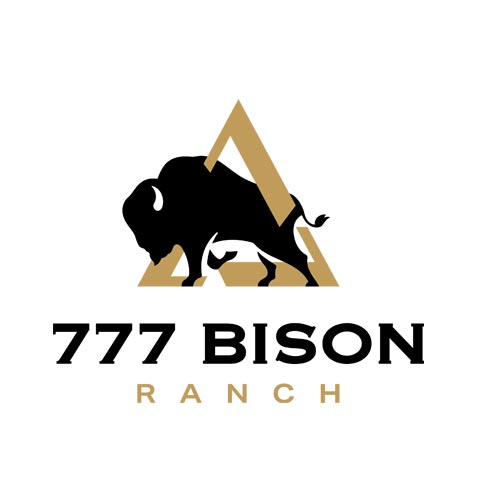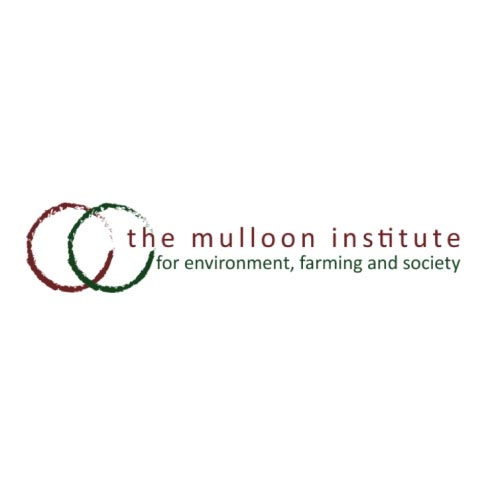“Never doubt that a small group of thoughtful, committed citizens can change the world; indeed, it's the only thing that ever has.” -Margaret Mead
What if you could change the world? Seriously: What if you could make a lasting impact on this planet, one that would improve the lives of billions of people and allow us to all collectively hand the next generation something better than what we received? Consider that for just a minute, because we’re not being hyperbolic. At the Savory Institute, our team wholeheartedly believes that we, as committed citizens, can indeed change the world. In fact, we must change the world.
Humanity is at a crossroads and is facing a number of scary cliffs on our current path over the coming decades. Climate change and the corresponding natural disasters, world hunger, water insecurity, and volatile economies — these phenomena are all becoming a reality for populations across the world. The global narrative preaches endlessly about an impending dystopian future defined by hopelessness and anguish. And while such an apocalyptic reality is very much a possibility our civilization may encounter, we don’t view the coming years with fatalism or despondency. We still have hope. We see an opportunity to reverse these negative currents and create a positive future for each and every one of us.
The Oncoming Opportunity
There has been a tipping point, at a global scale, of individuals working tirelessly to trailblaze new pathways forward for humanity. An awakening has happened over the last decade; people now recognize that the soil can be the solution to so many of the problems that we are facing. Healthy soil can sequester atmospheric carbon and turn that carbon into soil fertility that holds onto more water and more nutrients. More water increases the potential to hold onto more biodiversity and production capacity. This increases the quantity and quality of both food and fiber being grown on those lands. That higher quality and increased production leads to stabler, more robust local economies. Stability at the community level compounds to breed stability and strength at the global level.
We have every right to be hopeful: These positive trends are already happening at scale. The momentum is moving in the right direction. The science and research are there. There is a migration of ideas on an unprecedented scale to align on values that celebrate soil. This movement is generally called “regenerative agriculture.”
For context, this idea of regeneration has grown so rapidly that it's become something of a buzzword. You see a lot of organizations using it to infer a whole myriad of different claims, some of which are more factual than others. While it is encouraging to see so many people interested in regenerative’s potential, anytime something becomes a trend in the zeitgeist, it comes with risk of confusion or watering down of its original intent. We think it’s most helpful to think of the word regenerative as synonymous with “net positive,” something that creates more than it extracts. These differences between it and “sustainable” — a similarly buzzword-y concept centered around how to ensure things stayed the same and didn’t get any worse — are widespread. Chiefly, this new, ambitious notion is all about how we can continuously improve, rather than simply striving to preserve, the status quo. Because we need positive outcomes more now than ever before.

Land to Market Provides Action-Leadership
With that in mind, we started Land to Market at the Savory Institute in 2018 to scale up the deployment of action-leadership around regenerative agriculture as rapidly as possible and on an international scale. At that point, we had seen a lot of great work happening in various values-driven programs and elevated claims, such as certified organic, grass-fed meats, and animal welfare programs, but none of them inherently spoke to measured improvements in land health. We knew that was a critical missing piece, since measurement is actually a function of optimization. (We are big believers in the old adage of “what gets measured gets managed.”) In typical fashion, we didn’t see this as a void or a shortcoming — we saw it as an opportunity, a chance to deliver high-resolution, science-backed data on an individual farm scale that could speak directly to these regenerative outcomes. Our desire was to give the land a voice in the marketplace.
We knew we were the right people to do this because of our special position in the regenerative space. Allan Savory, the namesake and co-founder of our organization, has been a pioneer in the movement for more than 50 years and has been communicating about the importance of soil from the beginning. He developed Holistic Management, a framework that allows people to use their deepest values as a way to cut through complex problems. It is a triple-bottom-line proactive planning process, a framework that is akin to building a budget or game plan for everything important in your life. Allan realized early on that agriculture held the lowest hanging fruit for civilization to make the most headway; that if we manage our private lands correctly, we could regenerate the earth. The Savory Institute was founded in 2009 to make that work its primary focus.
As with everything in this field, this has been a collaborative effort. One of Allan’s first students, Daniela Ibarra-Howell, has worked side-by-side with him for many years. Beyond co-founding the Savory Institute (where she now serves as CEO), she saw the opportunity to take his work to new levels, including his earliest developments on the data front. Back in the late 1970’s, Allan had developed a monitoring process with ecologists and other scientists that allowed farmers and ranchers to examine the health of their own properties. This biological monitoring provided a feedback loop that illustrated how the land was responding to their management changes.
It was just the beginning, Daniela saw, but its possibilities were limitless. So, she worked diligently with Allan to make that process more robust — namely, in the way it looks at a whole aggregate of land health indicators — and added in components of laboratory analysis to ensure that data can be collected and analyzed from across ecoregions around the world. Critically, they also worked to make the whole process more consistent by working with both local and global quality assurance bodies.
Ecological Outcome Verification™
Those efforts laid the foundation for what we now call Ecological Outcome Verification™ (EOV™), the next evolution of that measurement protocol. It took three years of piloting, testing, and learning to get it ready, but the results have been game-changing. To date, 2.35 million acres across the globe have been measured by EOV™, which speaks to both the scale of its impact and the variety of regions it is being deployed. Demand is growing exponentially, and the work is happening in every corner of the world.
The relationship between Ecological Outcome Verification™ and Land to Market is a pivotal one. First, EOV™ measures land health holistically at the farm level and provides proven science for this larger movement; then, Land to Market connects those claims and the corresponding impact accounting to products coming from those farms and ranches. Both functions are at the core of our mission to revive grasslands, fuel rural communities, and empower consumers to change the world and support regenerative producers by voting with their dollars.
To properly unleash these tools into the market, we work directly with producers and consumers across a variety of fronts. Every master in their craft uses feedback loops to get better, to improve their handiwork. In that vein, EOV™ serves farmers first and foremost to help them optimize their operations. It meets every single farmer and rancher where they are, regardless of whether they are a seasoned regenerative farmer or an aspiring upstart who is still figuring out the basics but wants to be part of the bigger solution. With that in mind, we must acknowledge that agriculturalists have delivered what the world has asked for — cheap and fast food — but often begrudgingly. As a result, we embrace a journey mindset. We are not segregating the good actors from the bad. Rather, we believe that no producer has malice of heart for their land. They know their properties better than anyone, and no one needs to tell them how to farm. They simply need their good work to be recognized and rewarded.
On the other end of the chain, we help consumers engage with products that serve their values for environmental impact like never before. People no longer have to guess what kind of impacts a product may have on ecological health; instead, they can know it was grown and produced in ways that improve landscapes (with quantifiable environmental data to back that up). To create this, our offerings needed to go beyond typical structures for market differentiation and build a suite of services that serve the entire ecosystem, starting with the land, but cultivating transparency and traceability across entire supply chains. This makes Land to Market the first comprehensive global offering in regenerative agriculture.

Part of the Paradigm Shift
There is truly transformational momentum behind this. Land to Market is now reaching new levels of engagement as consumers, retailers, brands, investors, and farmers all want to be part of this next paradigm shift — one driven by a democracy of data and real-world measured outcomes. The demand for these services has been absolutely insatiable. We are proud to say that we have new brand members joining the journey each week and new verified products going to market at a similar clip.
At the end of the day, we both believe the greatest progress happens when your work can be backed by values and a deeper “why.” We are seeing this demand because consumers and farmers have been the disenfranchised end of supply chains for most of human history. Farmers have been forced to be price takers in commodity systems, always being asked to increase production and lower costs, regardless of the broader consequences. Consumers have historically been given as little data as possible to close the sale. But both camps are now demanding change.
We believe that everyone can win when we value consumers’ desires and honor the farmers’ plights and roles as ambassadors to the soil. This truly is the beginning of a long-awaited food and fiber democracy where people can vote with their dollars on environmental impact. It is an exciting time, to say the least. However, we are not content, nor are we satisfied. Because although the flywheel is spinning, we must continue to cultivate this ongoing growth and the aggregated biological returns on which we’ll all depend. We have so much more to accomplish together.
The Voice of the Land
This magazine represents a watershed moment for our Land to Market team. We are so proud to bring you this curated collection of stories. It’s just a sampling of the work that is in progress, but we can tell you wholeheartedly that the honor of serving this movement each day has been a labor of love. It is our deep hope that you connect with the commitment in each of these articles, to be able to empathize with people on the ground — the changemakers that are in deep relationship with their land. Whether the heroes in these stories are near you or far away geographically, they are each fighting for a better future for all of us. We hope you feel that. Through the following words and pictures, we also want you to hear the voice of the land coming through loud and clear…to feel transported, if only momentarily, to these amazing parts of the planet and the good stewardship being done there.
The one thing that life has repeatedly taught both of us, is that changing the world won’t come from the top down. Valuable paradigm shifts will not come from one big multinational brand, or one powerful government; no, it will take a collective of committed citizens making small daily changes to their lives. That’s why everything we do revolves around making it a simpler engagement for you, as an individual, to be a true solutionary. We all have a part to play in this movement, and we are so grateful you have joined us for this ride.

Land to Market
































.png)




























